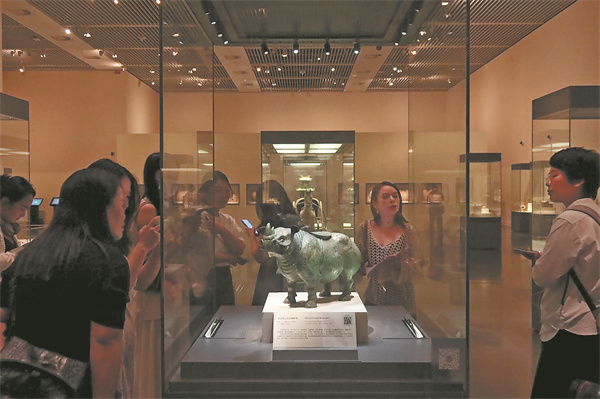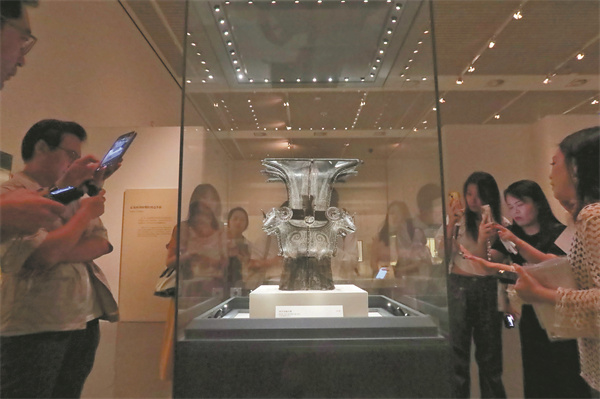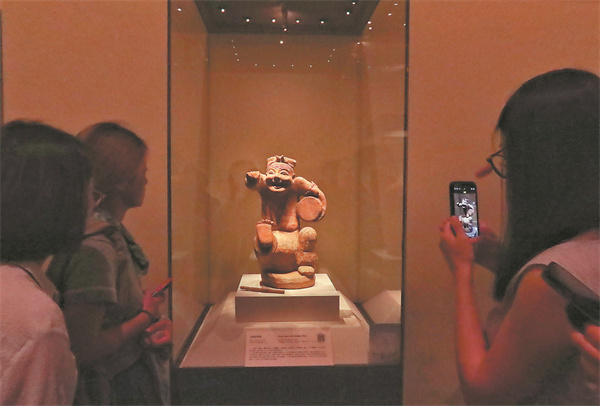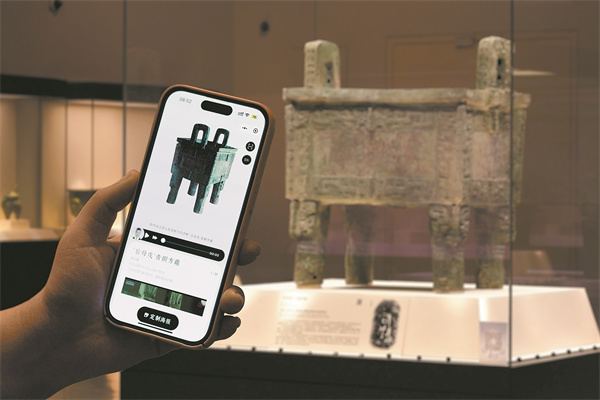From an empress' coronet to an exquisite necklace, history inspires modern appreciation of Chinese artistry, Lin Qi reports.

On July 19, Luo Li, a schoolteacher from Chengdu, Sichuan province, was pulled from a long queue at the National Museum of China in Beijing while waiting to buy one of the museum's most popular collectibles — an empress coronet magnet.
Surrounded by museum staff and media, Luo was told that the one she purchased was the two millionth coronet magnet sold since the product was first released exactly a year earlier. The magnets, available in both wood and metal versions, have become a sensation. She received the magnet from Li Yafei, a visitor from Shandong province who, in March, had purchased the one millionth magnet.
The unexpected craze has also drawn more visitors to see the original — a Ming Dynasty (1368-1644) gold coronet worn by Empress Xiaoduan, lavishly decorated with pearls and precious stones.

The coronet is part of the long-term exhibition, Ancient China, at the museum, where a special queuing area has been set up since the magnet went viral late last year.
While a quick glance may suffice for a photo, it hardly reveals the rich history behind the ornate headpiece.
To give visitors a deeper experience, the National Museum recently launched a WeChat mini-program called Essentiality of Beauty. Whether on-site or online, it allows users access to a selection of collected antiquities at the museum, featuring images and texts with audio narrations.
The program would take people on a guided tour, combining virtual and real experiences, of 32 artifacts which are from different periods of time and on display at the museum's current long-term shows, including the Ming empress coronet.

"These objects reflect people's pursuit of beauty. They have been treasured and passed down through the centuries because they are outstanding examples of artistic excellence," says Zhu Xiaoyun, curator and director of international relations at the museum.
She says the tour takes people through different exhibition halls, introducing artifacts that showcase a range of craftsmanship and art forms, helping them understand the evolution of Chinese cultural and aesthetic traditions.
Some of the objects, she says, appreciate the beauty of nature, and underline the "dao fa zi ran" principle in classic Chinese philosophy, that is, learning from nature and following its principles. Others celebrate the pinnacle of ancient craftsmanship, such as a seventh-century gold necklace inlaid with pearls and red and blue gemstones.
READ MORE: HK Palace Museum to host exhibition of ancient Egyptian treasures
The necklace has a poignant backstory. In 608, 9-year-old Li Jingxun, a young aristocrat and granddaughter of Yang Lihua, a daughter of Yang Jian, the founding emperor of the Sui Dynasty (581-618), was buried in an extraordinary ceremony. Archaeologists excavating her tomb more than 1,300 years later were astonished by the richness of the burial, which included the necklace now displayed in the exhibition Ancient China.
Other artifacts reflect the grandeur of social rituals, such as intricately patterned bronzes from the Shang Dynasty (c. 16th century-11th century BC), used in major ceremonies.
Still others convey romance and freedom, such as a Tang Dynasty (618-907) mural of a woman in a flowing red dress performing the "scarf dance", in which the dancer wove long scarves through the air.

The fresco is also on show at Ancient China. Zhu says they sought advice from veteran scholars such as Peng Feng, dean of the School of Arts, Peking University, and rewrote the scripts for each artifact in the mini-program, different from the texts in the showrooms.
For the mural, the program's script draws connections between dance and calligraphy, noting that the famed Tang calligrapher Zhang Xu was said to have developed his bold kuangcao (wild cursive) style after being inspired by watching dancers perform.
Some of the narrations are voiced by celebrities — actress and model Zhong Chuxi for the Tang dancer mural, and actor Zhang Linghe for Li Jingxun's necklace.
The project is a collaboration between the National Museum and L'Oreal China. The partnership began last year when L'Oreal sponsored the Notre-Dame de Paris: The Augmented Exhibition at the museum.
ALSO READ: HK Palace Museum plans diverse exhibitions to bridge East-West cultures
It was sponsored by the cosmetic brand, working with the public institution in charge of the conservation and the restoration of the Notre-Dame Cathedral in Paris. It, meanwhile, opened up cooperation with the group and the National Museum.
Lan Zhenzhen, president of public affairs for L'Oreal North Asia and China, says no effort is spared when pursuing beauty, and the program invites more people to explore the essence of beauty and the Eastern philosophies behind it.
Curator Zhu says the artifacts featured in the mini-program will be updated in line with changes in the museum's exhibitions. She emphasizes that the selection is not meant to represent all of Chinese aesthetics, but to serve as starting points for visitors to explore how ancient Chinese understood and created beauty — and how that legacy can be preserved today.
Contact the writer at linqi@chinadaily.com.cn


